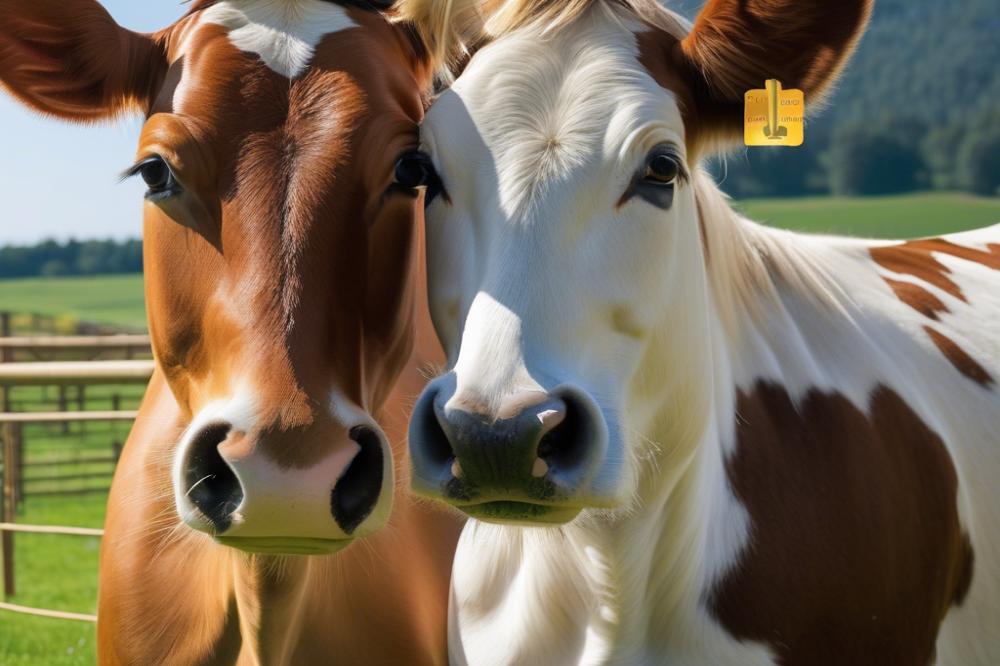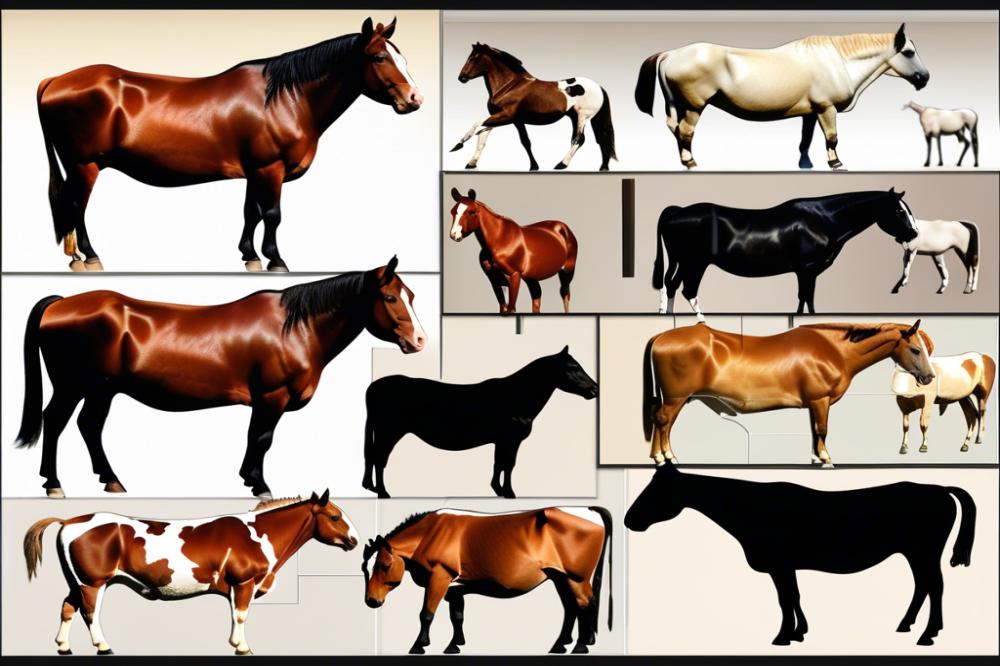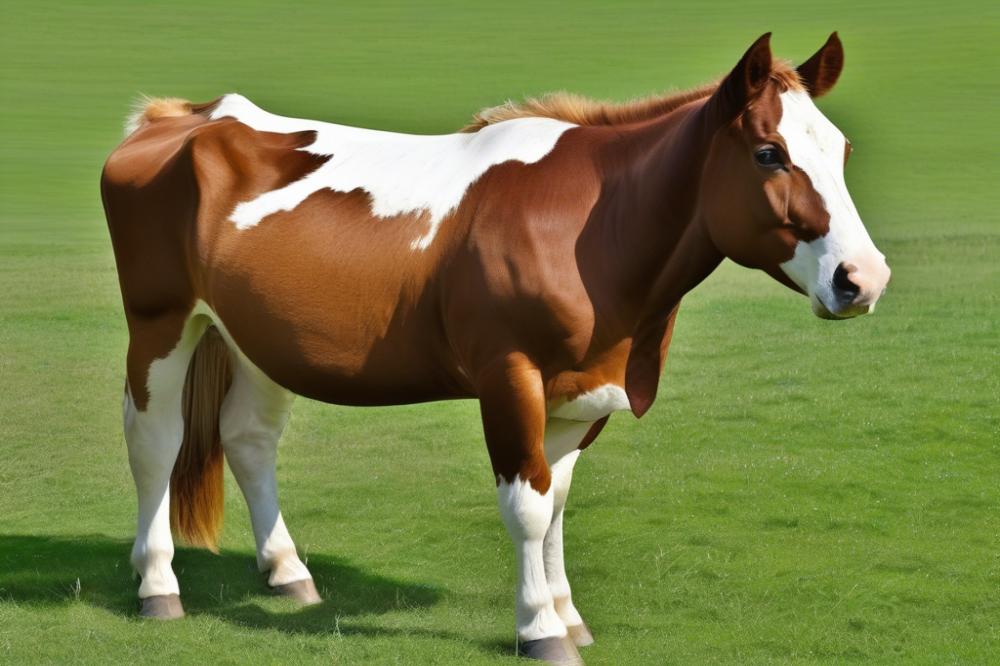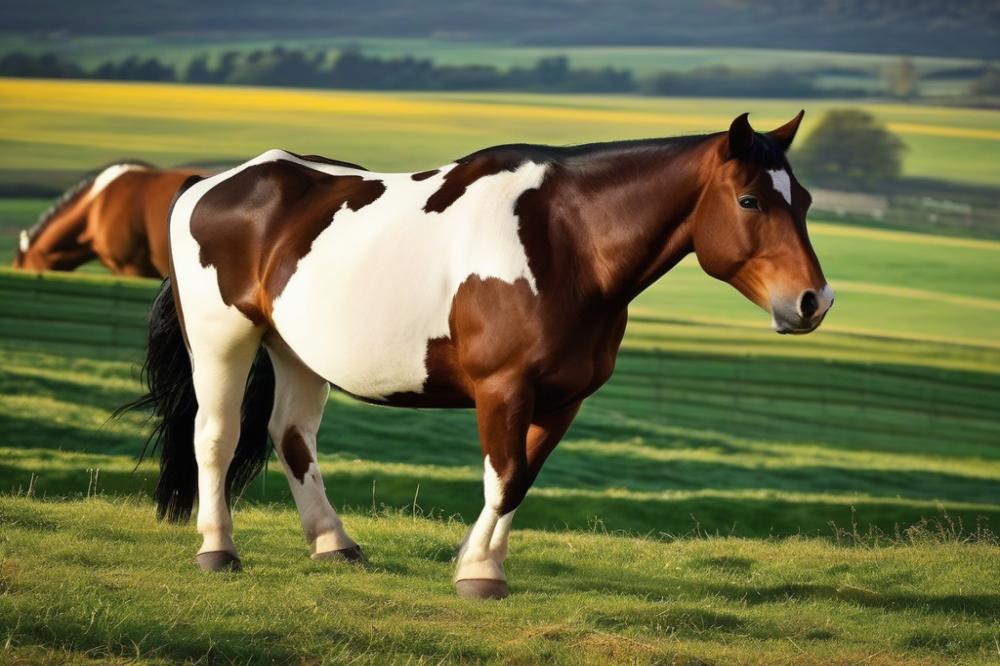Exploring the Possibilities of Crossbreeding: Cows and Horses
Have you ever wondered if a cow and a horse could somehow come together to create a new animal? The idea might sound a bit outlandish at first. However, the world of animal genetics is filled with fascinating possibilities. We’ve all heard about hybrid animals like mules, but what makes the idea of a cow and horse crossbreed so intriguing? Understanding these concepts can help us grasp the complexity and beauty of nature. Whether you’re a curious animal lover or have a knack for science, there’s something compelling in this exploration.
Animal crossbreeding plays a significant role in various fields. From enhancing livestock for better milk production to creating more resilient crop pollinators, bovine breeding and equine breeding practices influence agriculture in huge ways. Learning about horse genetics and cow genetics can shed light on why some animals thrive more than others. Knowledge about hybrids can also shape our ideas about biodiversity and conservation. Every species has its own story, and understanding what makes them tick can foster a deeper respect for the animal kingdom.
The aim of this article is to dive into the specifics of whether a cow and a horse can actually crossbreed. While it might sound like an imaginative tale, we’ll look into the science that tells us it’s not possible. It’s a bit like trying to fit a square peg in a round hole—some things just don’t mesh! Still, we can explore why this notion exists, and how it reflects our fascination with unique animal combinations. Plus, let’s not forget to throw in a sprinkle of fun facts, like the renowned Lexington horse or even tips about the best truck to pull horse trailer. So buckle up as we embark on this curious journey into the world of animal genetics!
Understanding Crossbreeding

Definition of Crossbreeding
Crossbreeding refers to the practice of mating individuals from different breeds or species. This mixing aims to produce offspring that may have desirable traits from both parents. Think of it as a kind of biological matchmaking. When you breed different animals, the result can sometimes be surprising.
Overview of Hybrid Animals
Hybrid animals arise when two species, or breeds, come together. Horses and donkeys produce mules, while lions and tigers make ligers. These hybrids often inherit features from both parents. For example, mules are known for their strength and endurance. Not every hybrid can reproduce, but they usually exhibit fascinating characteristics. Bridging gaps between species can lead to some intriguing looks and behaviors!
Examples of Successful Crossbreeding in Other Species
In nature and on farms, interspecies breeding happens more often than you might think. One popular example includes the liger, a cross between a lion and a tiger. These giants showcase a mix of traits from fierce felines. Another instance is the zorse, a zebra-horse offspring. They inherit markings from the zebra, making them stand out in any herd. When it comes to equine breeding, the intentions behind crossbreeding can vary from working animals to show horses. Bovine breeding also has its share of hybrids that have emerged through careful selection. Each unique combination brings something exciting and new to the table!
Biology of Cows and Horses

Basic Anatomy and Genetics of Cows
Cows have a body designed for grazing. Their unique digestive system includes a four-chambered stomach, which helps break down tough grass and hay. Bovine genetics consist of 60 chromosomes. This number plays a big role in traits like milk production, size, and temperament. Cows come in various breeds, each with its own characteristics. Some are known for their meat quality, while others are appreciated for their milk. These genetic differences can affect everything from color to health.
Basic Anatomy and Genetics of Horses
Horses, on the other hand, are built for speed and stamina. Their long legs and strong muscles allow them to run fast. Horse genetics involve 64 chromosomes, somewhat different from those of cows. Many breeds exhibit a range of traits, from size to color, and even personality. Thoroughbreds are famous for racing, while Percherons are known for their strength and pulling ability. The diversity in equine breeding brings forth horses suited for various jobs and hobbies, making them quite adaptable.
Differences in Reproductive Systems
Reproductive systems differ between these two animals. A cow’s cycle, known as estrus, lasts about 21 days. During this time, a cow is only fertile for about 12-18 hours. Horses also have a cycle of roughly 21 days, but their fertile period can last longer. This difference might seem small, but it makes a big impact on breeding. Cows typically give birth to one calf, while mares usually have one foal at a time. The physical differences in reproductive organs further complicate the idea of interspecies breeding. Hybrid animals from two different species, like cows and horses, are unlikely to happen due to these reproductive challenges.
In discussing cow genetics and horse genetics, it’s clear they belong to two separate worlds. Their anatomy supports their lifestyles, making crossbreeding a complicated dream. While it’s fascinating to learn about these animals, it helps to remember their unique biological traits.
The Concept of a Cow and Horse Crossbreed

People often wonder about the idea of a cow and horse crossbreed. Could a horse and a cow create a hybrid? Unfortunately, the answer isn’t as simple as it seems. To understand this better, we need to delve into interspecies breeding.
Genetic compatibility plays a crucial role in the creation of hybrid animals. Horses and cows belong to different families. Horses are part of the equine family, while cows belong to the bovine family. This difference makes it nearly impossible for them to produce offspring together. Think of it like trying to mix oil and water. They just don’t go together!
From a scientific standpoint, horse genetics and cow genetics are vastly different. Each species has its own set of chromosomes, creating a mismatch in their genetic coding. In essence, their DNA doesn’t align well enough to allow for successful reproduction. Even if they could somehow mate, the odds of pregnancy are slim to none. The body simply wouldn’t recognize the partnership as viable.
Some folks might be curious about the exceptions to the rule. For example, you might hear aboutcrossbreeds between similar species, like a lion and a tiger. In those cases, the offspring, like ligers, can exist because they share more genetic material. Cows and horses, however, do not share any common ancestors that would allow for such crossover in breeding.
Still, some romantic ideas float around about creating a creature that combines traits from both animals. People often picture a magnificent creature that has the strength of a horse and the calm temperament of a cow. It sounds cool, right? But alas, in reality, those dreams are just that—dreams.
So why do individuals keep asking about this? Perhaps it’s the allure of the unusual or simply curiosity. Talking about horse and cow hybrids often brings smiles and laughter. Who doesn’t enjoy a good discussion about “fantasy animals” and what they may look like?
In summary, while the thought of a cow and horse rolling in the pasture together sounds pleasant, science has other ideas. Instead of focusing on impossible combinations, maybe we should appreciate each animal for its individual traits. After all, cows and horses already have their own unique charms!
Historical Perspective on Animal Hybrids
Overview of Past Attempts at Crossbreeding Cows and Horses
People have always been curious about mixing different kinds of animals. In the past, some tried to mix horses and cows. This idea came mainly from the desire to create stronger and more versatile animals. However, multiple efforts led to the realization that cows and horses belong to entirely different species. Their genetics just don’t match up well enough for successful breeding. While horse genetics and cow genetics are fascinating in their own rights, interspecies breeding between them hasn’t resulted in viable offspring.
Notable Hybrids in the Animal Kingdom
There are some interesting hybrid animals in nature. Think about mules, which are a mix of donkeys and horses. They are strong and hardworking, much appreciated by farmers. Another example is the liger, a cross between a lion and a tiger. Ligers are known for being huge, but they come with their own challenges. What’s important about these hybrids is that they show how different species can produce offspring. Unfortunately, mixing cows and horses isn’t in the same league as these well-known hybrids.
Implications of Hybridization in Agriculture
Hybridization has a significant impact on agriculture. Farmers often use selective breeding to improve traits in animals like cows and horses. For instance, bovine breeding focuses on creating cows that produce more milk or meat. On the other hand, equine breeding looks for qualities, such as speed or endurance in horses. This selective breeding has helped agriculture evolve and thrive. However, adding the idea of a cow and horse crossbreed faces serious roadblocks. When animals cannot naturally mate, it becomes a tricky business. This situation could waste time, resources, and hopes.
Hybridization in farming can be a double-edged sword. While it opens doors for unique traits and advantages, it can also lead to challenges. Keeping animals healthy and ensuring they can thrive demands careful consideration. Involving different species can sometimes confuse even the experts. That’s why sticking to species that can naturally breed makes more sense. Farmers usually prefer to invest energy and resources into improving existing breeds. After all, working with nature often yields the best results.
Cultural and Mythological References
Representation of Cows and Horses in Myths and Folklore
Throughout history, cows and horses have played significant roles in myths and stories. In many cultures, these animals symbolize strength, fertility, and abundance. For instance, in Hindu mythology, the cow is considered sacred and represents motherhood. Horses often embody freedom and power, appearing in legendary tales of brave knights. Think of Pegasus, the winged horse who sprang from Medusa’s neck—a true mythical marvel! These animals have captivated people’s imaginations for centuries, influencing art, literature, and even religion.
Popular Culture References to Animal Hybrids
You don’t have to look far to find hybrid animals in pop culture. They pop up everywhere, from books to movies. Consider the famous creature called the “griffin,” a mix of an eagle and a lion. It’s fascinating how these fantastical beings spark curiosity. You might have seen films featuring unicorns or centaurs, which blend horse genetics with human traits. These hybrids show how our imaginations stretch the limits of nature. If only we could turn a cow and horse crossbreed into a movie star, right?
Public Perception of Crossbreeding
People often have mixed feelings about interspecies breeding. Some folks are excited by the idea of hybrid animals, imagining what might be created. Others worry about the ethics and the health of such creatures. Could a cow-horse mix really be healthy? Often, people focus on how animals should be bred to enhance their best traits while keeping them healthy. It’s a tricky balance. A farmer might dream of a creature that combines the strength of a horse with the calm demeanor of a cow. That’s quite the thought! Public opinion swings between fascination and skepticism, showing how deeply animals are loved and cared for by many.
Wrapping It Up: The Curious Case of Cows and Horses
After diving deep into the fascinating world of genetic possibilities, we’ve uncovered that the concept of a cow and horse crossbreed is more of a mythical dream than a scientific reality. Cows and horses belong to different species, and their genetic make-up simply doesn’t allow for such a combination. While it’s a fun notion to imagine a creature that might trot through fields with a gentle moo, the facts don’t support the fiction.
Throughout our exploration, we touched on various related topics, including how a horse’s temperament differs from a cow’s and what their individual behaviors tell us about their relationships with humans. Speaking of which, have you ever wondered, do horses recognize their owners? Stories abound about their incredible memories, showcasing that connection we have with horses. They seem to have a knack for remembering the friendly faces that bring them treats or simply kindness.
Let’s not forget the challenges that both animals face in our modern world. Horse depression, for instance, is a very real issue that pet owners must watch for. Just like us, these animals can experience sadness if proper care, attention, and companionship fall short. This points to the importance of understanding the needs of both species, ensuring they’re happy and healthy.
Looking towards the future, the world of crossbreeding research continues to intrigue scientists and animal lovers alike. While crossing cows and horses may not yield a new breed, there are many other avenues to explore that can enhance traits in both species. With advances in genetics and animal science, we might uncover new benefits or improved qualities in livestock and equine populations. After all, isn’t the goal to cultivate animals that are not just functional but also bring joy to those who care for them?
Ultimately, while cows and horses may not walk side by side in a genetic partnership, understanding the complexities of their own unique traits fosters a better appreciation for what they bring to our lives. Let’s cherish the distinctiveness of each, embracing the beauty in their differences as we continue to care for them with the utmost devotion.



